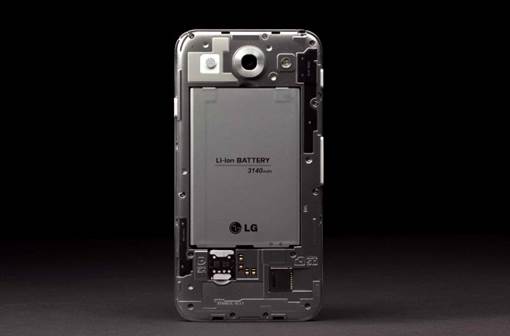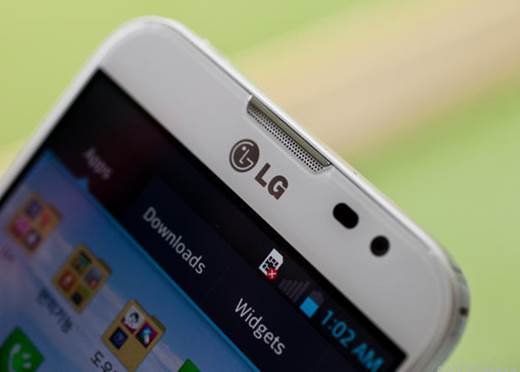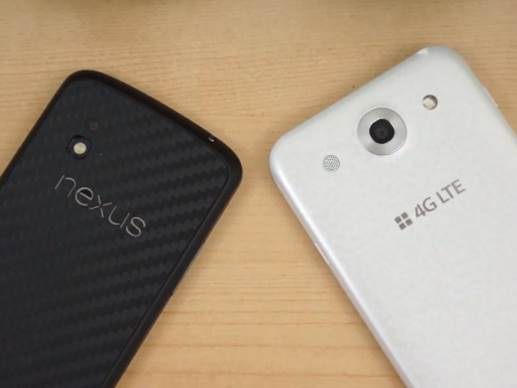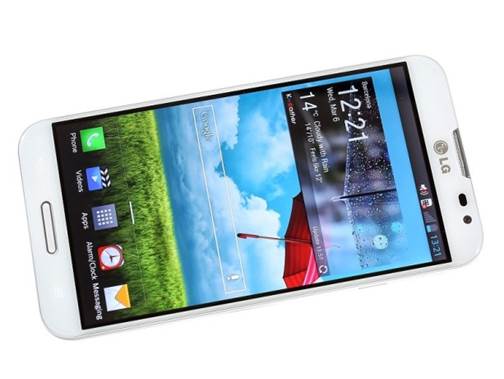The back is as beautiful as the Optimus G
and Nexus 4, and it is mainly due to the fact that the G Pro uses the same
checkerboard-like design features from the two previous phones. However, one
greater improvement compared to these two phones is that its back is not
actually made of glass. It may not provide the same luxurious feel for this
reason, but there are plenty of possibilities of withstanding a drop or two. An
external speaker grid, LED flash and 13MP camera are surrounded with metal
lined at the top of the back, the LG U + LTE and LG logos are located
underneath. Remove the back cover and you will find yourself face to face a
3,140mAh removable battery, micro-SIM slot and space to place a microSD card.
In addition, this is also where you'll find the contacts for the NFC.

Remove
the back cover and you will find yourself face to face a 3,140mAh removable
battery, micro-SIM slot and space to place a microSD card.

An
external speaker grid, LED flash and 13MP camera are surrounded with metal
lined at the top of the back, the LG U + LTE and LG logos are located
underneath.

The
back is as beautiful as the Optimus G and Nexus 4, and it is mainly due to the
fact that the G Pro uses the same checkerboard-like design features from the
two previous phones.
Turning the device to the front, you will
see the earpiece located along the top edge next to the sensors and a 2.1MP
front-facing camera. However, the most interesting part is on the opposite side
of the screen: the LED notification light smartly lies under the home button,
its pale light surrounding the button. (To add a little bit of enjoyment, you
should pay your attention carefully to the light while booting up the phone -
almost all rainbow colors will appear when you are waiting for the G Pro to
boot). Unfortunately, this is only part of the home button that we like,
because it is too thin and flush with the chassis, which makes it somewhat
difficult to press. The back and menu soft keys flank the home button on the
left and right, respectively.

Turning
the device to the front, you will see the earpiece located along the top edge
next to the sensors and a 2.1MP front-facing camera. However, the most
interesting part is on the opposite side of the screen: the LED notification
light smartly lies under the home button, its pale light surrounding the
button.
We like what LG has done on the sides of
the G Pro. It has designed the phones to provide all of the buttons, ports and
the components that can be customized we use regularly, and it did so without
causing the appearance of the G Pro to look like a scattered mess. A chrome
strip comes down the left and right edges until it enlarges at the top and
bottom to cover the entire thickness of the phone. The top of the phone has a
3.5mm headphone jack, an IR blaster, microphone and retractable T-DMB antenna
(to be used for the live TV services of Korea). The left side is the place
where the volume rocker and the QButton lie, which is a convenient shortcut key
that we will discuss later in the review. To the right is the power button. At
the bottom, you'll find the micro-USB charging port which is also used for
SlimPort.
Screen
Within just three months, the 1080p screens
have grown from a smartphone feature that does not exist to the main indicator
of a high-end status of the phone. Fortunately, the Optimus G Pro provides such
a screen, which LG advertises it as True HD-IPS + LCD. Actually we have never
seen a 1080p smartphone screen that we did not like, and the 5.46-inch screen
that is not PenTile of the G Pro is no exception - especially when seen next to
the Note II’s 5.55-inch, 720p screen. (Also, both phones are using the same
screen size, but LG packs more useless pixels around the border that makes the
viewable screen space become slightly smaller). If it is considered the number,
the phone’s pixel density (401ppi) is lower than the HTC One’s (468ppi) and the
Droid DNA’s (440ppi), but the difference between the two is not as large as the
number is shown.

The
1080p screens have grown from a smartphone feature that does not exist to the
main indicator of a high-end status of the phone. Fortunately, the Optimus G
Pro provides such a screen, which LG advertises it as True HD-IPS + LCD.
How about the viewing angles? The G Pro has
quite a lot. IPS monitors are renowned for excellence in this field, and the
Pro is the official representative for that screen technology. If watching
movies or reading books from the extreme corners is your preference (or you
just love it when friends or strangers start to keep their inquisitive eyes on
what you're watching), of course it will not disappoint. The only screen with
the excellent viewing angles is the S-LCD3 on the Droid DNA, and it only
defeats the Pro by an extremely slight margin. However, the screen is
unsuccessful in direct sunlight, because we had to increase the brightness up
to at least 80 percent so as to see anything clearly.
In terms of the color saturation, we saw
the Pro side by side with the Note II and Droid DNA, and the Pro was easy to
feature the most natural colors of three phones; the DNA was often inadequately
saturated, while the AMOLED screen on the Note II was on the opposite way.
Now that 1080p is becoming more popular in
the high-end smartphone market, are there really any impressive factors related
to the G Pro’s screen? Certainly, viewing such rich lively texts and smooth
lines on the big size of a screen is amazing. It may not pack as plenty of
pixels per inch as the DNA, but it's certainly closer to the level that makes
little difference to our eyes - after all, you will not see individual pixels
on two screens. They are both gorgeous, and this phone seems to take advantage
of a larger screen.